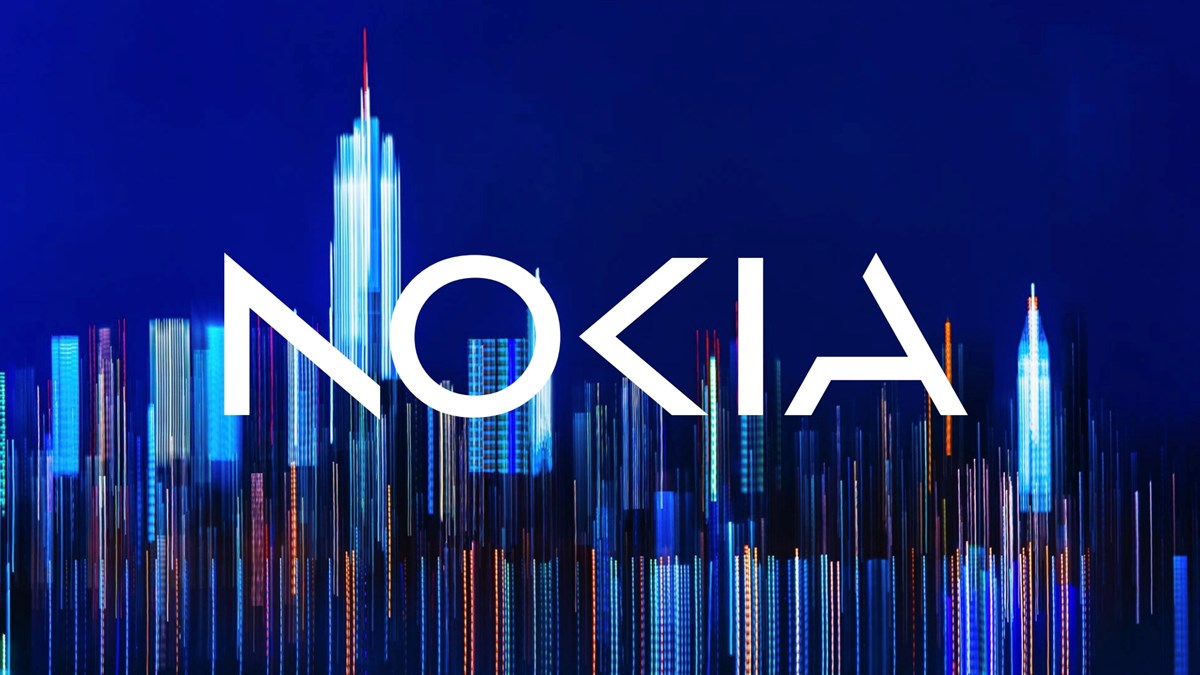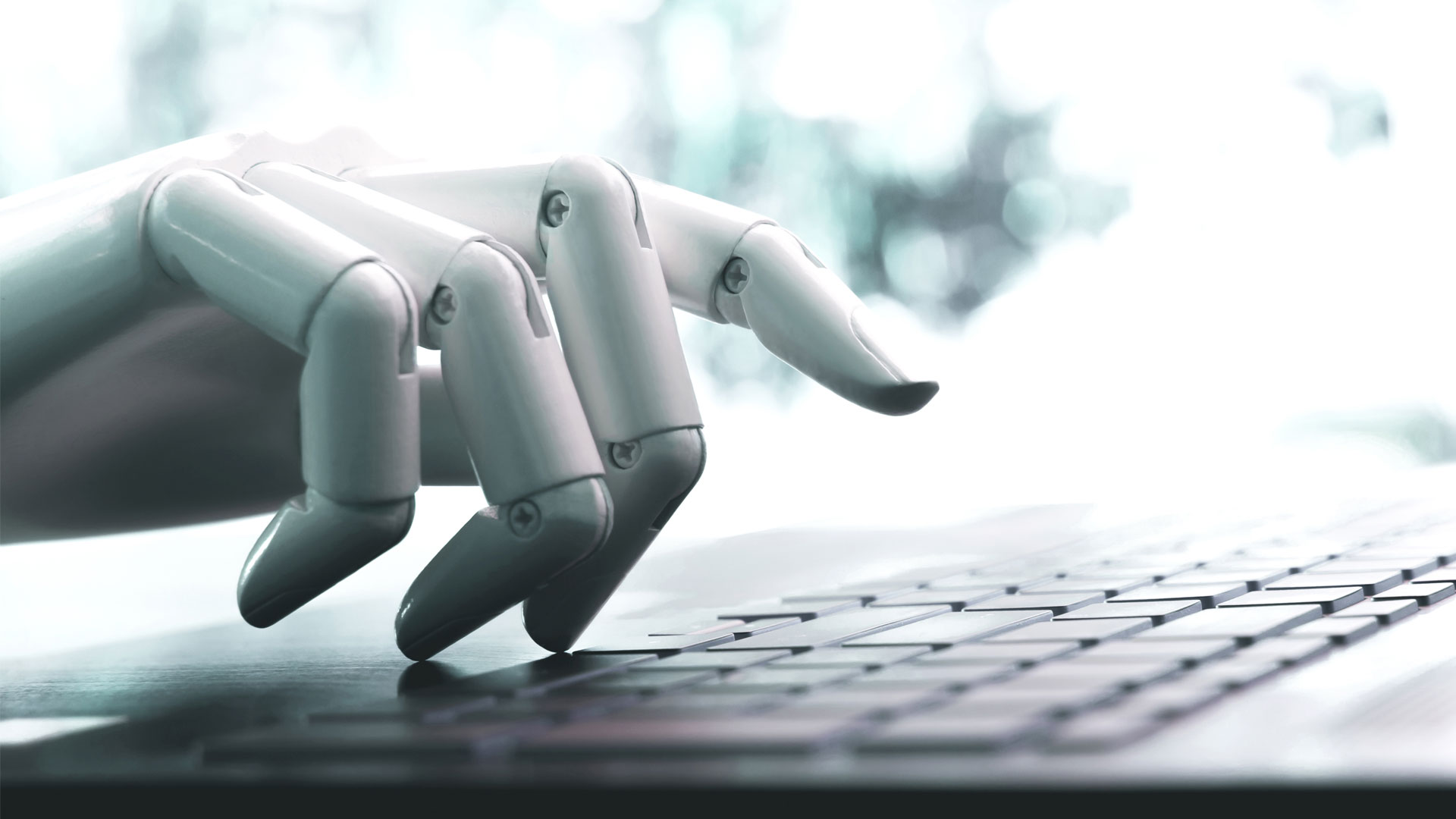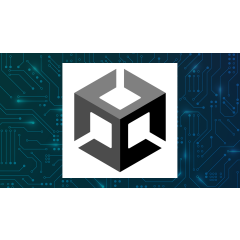
McKinsey's Technology Trends Outlook report highlights 13 technologies driving innovation and addressing critical challenges across sectors. The top trends include: 1. Artificial intelligence (AI) agents, which leverage foundation models to perform tasks on behalf of human users. 2. AI systems, including generative AI chatbots, predictive algorithms, and pattern-detection systems. 3. Semiconductors, such as graphics processing units (GPUs), designed to handle specific tasks. Other notable trends include: * Immersive-reality headsets, such as virtual reality (VR) and augmented reality (AR) * Cybersecurity, as cybercriminals use AI to imitate real people and circumvent organizations' measures * Quantum computing, which leverages quantum mechanics to execute calculations exponentially quicker * Robotics, including self-driving cars and humanoid robots * Advanced transportation technologies, such as drones and e-bikes * Biotechnology, including gene editing and synthetic biology * Space technology, with companies like SpaceX and Blue Origin ushering in commercial spaceflight * Sustainable energy, with innovations aimed at transforming the global energy landscape toward a more sustainable future. These technologies are driving innovation and addressing critical challenges across sectors, and are expected to have a significant impact on business and commerce in the coming years.
Read full article
July 23, 2025 • By Usman Qureshi
Meta's Reality Labs has published research on a wrist-worn electromyography (EMG) interface that controls Meta's Orion AR glasses. The prototype sEMG wristband captures subtle muscle signals from wrist and forearm gestures, translating them into commands for the AR system. This interface operates wirelessly and unobtrusively, enabling natural, hands-free control. The research, published in Nature, validates the scientific rigor behind Meta's wristband and opens the field to peer review and innovation. The technology offers a lightweight, bio-based alternative to standard touch or voice controls, and could accelerate the adoption of EMG across XR systems. However, commercial adoption remains a future goal, as the Orion prototype is still in development and not yet available to consumers.

July 23, 2025 • By Sam Biddle
US Customs and Border Protection (CBP) is seeking advanced AI technologies to surveil urban residential areas, autonomous systems, and even see through walls. A presentation obtained by The Intercept reveals a detailed wish list of tech CBP hopes to purchase, including satellite connectivity for surveillance towers and improved radio communications. The Trump administration's anti-immigrant campaign will extend deep into the interior of North America, with CBP's Law Enforcement Operations Division needing "Advanced AI to identify and track suspicious activity in urban environment." The agency did not respond to questions about the slides. The presentation mentions the need for "Advanced intelligence to identify suspicious patterns" and "Long-range surveillance" in city environments, which could potentially lead to biased and inaccurate results. The use of AI-aided urban surveillance raises concerns about privacy and civil liberties, particularly in areas with dense residential populations. The Fourth Amendment provides protection against arbitrary police searches, but federal law grants immigration agencies the power to conduct warrantless detentions and searches within 100 miles of the land borders. CBP is already using AI tools to ferret out "suspicious activity," and the agency's 2024 strategy document emphasizes the use of autonomous technologies to improve border security. The presentation includes requests for small drones that incorporate artificial intelligence technologies to aid in the "detection, tracking, and classification" of targets. However, efforts to algorithmically label human behavior as "suspicious" have been criticized as error-prone and reliant on ethnic and religious stereotypes. The proposed use of AI in urban surveillance reflects the Department of Homeland Security's longtime ambition to use machine learning to rapidly ingest and analyze varied data sources to find buried trends, threats, and targets. However, this approach has been criticized as a "fantasy" that remains unchallenged despite the lack of empiricism to support it. The use of AI in immigration enforcement has been a priority for the Department of Homeland Security, with the agency seeking to automate the process of detecting and tracking potential threats.

July 23, 2025 • By msmash
A user shared their experience with the "Myo Armband", a device that used sEMG sensing and accelerometers to recognize hand gestures. Although it had limitations, they believe a modernized version could be effective, especially with the use of neural networks and machine learning. The technology has been acquired by Meta/Oculus, which is now developing it. The user also mentions that Apple's Vision Pro can read hand gestures without requiring any additional devices.

July 23, 2025 • By Anna P
Here is a concise summary of the news article in 8173 tokens or less: Personalized learning uses AI and data analytics to tailor educational content to individual learners' needs, increasing engagement by up to 30% and reducing training time by nearly 40%. AI-driven adaptive learning continuously adjusts the learning pathway based on real-time inputs, identifying knowledge gaps and offering customized recommendations. This approach is gaining traction in corporate training, with companies reporting up to 60% faster employee onboarding and improved retention of critical skills. Modern eLearning solutions provide scalable and cost-effective ways to deliver high-quality education, with key capabilities including AI-powered knowledge suites, adaptive learning, and real-time analytics. The global eLearning market is projected to exceed $400 billion by 2026, driven by demand for reskilling and upskilling. By investing in robust eLearning infrastructure, organizations can develop a future-ready workforce and deliver learning experiences that are more engaging, effective, and scalable.

July 23, 2025 • By Dr. Gabby Burlacu for Upwork
Dr. Gabby Burlacu for Upwork Which skills are the most valuable in an AI-powered world of work? In todays increasingly AI-driven world of work, success is becoming less frequently defined by techni…

July 23, 2025 • By Abhimanyu Ghoshal
Researchers at Meta have developed a wristband that translates hand gestures into computer commands, potentially making devices more accessible to people with reduced mobility. The wristband, called sEMG-RD, uses sensors to detect electrical motor nerve signals in the wrist, allowing users to control a cursor, navigate interfaces, and even transcribe handwriting in the air into text. The technology can recognize various gestures, including finger pinches, thumb swipes, and thumb taps, and can enter text at a rate of 20.9 words per minute. Unlike other similar systems, the sEMG-RD does not require calibration for individual users, making it widely deployable. The researchers believe this technology could be further developed to detect intended force and enable more nuanced controls, and could also lead to novel interactions that are not yet possible.

July 23, 2025 • By TelecomTV Staff
Here is a concise summary of the news article: Nokia has issued a profit warning due to currency exchange fluctuations and tariffs, resulting in an 8.5% drop in its share price. The company expects a negative impact of €230m on its operating profit projection due to the change in the euro-US dollar exchange rate and an additional €50m-€80m impact from tariffs. In other news, AT&T expects to benefit from cash tax savings of $6.5bn-$8bn between 2025-2027 due to the One Big Beautiful Bill Act and plans to invest $3.5bn of these savings into its fibre access network infrastructure. Comcast and Charter have partnered with T-Mobile US to offer mobile services to their enterprise customers, marking a shift away from their existing MVNO partnership with Verizon. Research firm Omdia has analyzed the cloud service providers in Asia, including SK Telecom, Alibaba, Baidu, Huawei, and Tencent, and found that they are deploying various GPUs, AI accelerators, and AI-optimized CPUs to meet the rising demand for AI inference. Globe Telecom has committed to powering 3,000 cell sites with 100% renewable energy, reducing its greenhouse gas emissions by approximately 5.5 million kilograms. Finally, research firm Mobile Experts has concluded that AI assistants and AR will strain 5G networks, but AI-for-RAN optimization will create more capacity than consumer applications will use through 2030.

July 23, 2025 • By Ann Koppitch
The GRUVE Lab, located within the GVIS Lab, features the CAVE, a virtual reality system used for mission scenarios and touring NASA facilities. It allows multiple users to view 3D visualizations together, using projectors, mirrors, and motion tracking technology. The CAVE can be driven by Windows or Linux systems, providing a unique advantage for researchers and scientists to analyze complex data. The lab offers various devices for employees to test and apply to their work, and can be contacted via email. The GRUVE Lab supports NASA's mission to explore, innovate, and inspire through discovery.
July 23, 2025 • By Research and Markets
Here is a concise summary of the news article: The global shopping application market is projected to grow from $1.2 billion in 2024 to $2.4 billion by 2030, at a CAGR of 11.5%. The growth is driven by factors such as increased smartphone use, improved mobile UX/UI, digital payment infrastructure, and retailers' investment in mobile-first strategies. A new report by ResearchAndMarkets.com provides an in-depth analysis of market trends, drivers, and forecasts, featuring 43 companies in the shopping application market. The report highlights the shift towards omnichannel retail strategies, social and livestream commerce, and the ability of shopping apps to collect rich user data, making them a fast-growing segment in the global retail ecosystem.

July 23, 2025 • By Ann Koppitch
Here is a concise summary of the news article: In 1982, NASA Glenn introduced a $20 million supercomputer to aid scientists in testing experiments through virtual models and data. However, the large amount of data generated posed a challenge for analysis. To address this, NASA Glenn built the Interactive Computer Aided Research Engineering (ICARE) system, which used supercomputer visualizations to examine data. The ICARE system was revolutionary, and in 1989, it was upgraded to the Graphics and Visualization Lab (GVIS), which acquired cutting-edge graphics technology. The GVIS Lab developed new visualization techniques, promoted NASA Glenn's activities, and experimented with virtual and augmented reality-based visualizations. Today, the GVIS Lab continues to push the limits of scientific visualization and computer science, supporting various technologies, including virtual design, interactive 3D simulations, and mission scenario visualizations. The lab also engages in educational outreach and supports interns through mentorship and access to cutting-edge technology.

July 23, 2025 • By Jeanne Meister, Contributor, Jeanne Meister, Contributor https://www.forbes.com/sites/jeannemeister/
Here is a concise summary of the article: Companies are starting to use AI as a new team member, rather than just a technical tool. A survey of 604 HR leaders and workers found that nearly 4 out of 10 workers want to learn how to collaborate with AI in their job. To develop an AI-powered workforce, leaders must create transparency in how they use AI, consider embedding AI into training programs, and use AI to train workers in human skills. Examples of companies using AI as a team member include EY, Duolingo, and Medtronic, which are incorporating AI into their training programs and using AI to enhance leadership skills and improve sales performance. Leaders must role-model an AI mindset and be willing to experiment with AI to create a culture of shared AI knowledge. By 2027, 50% of organizations are expected to deploy generative AI where humans work alongside AI agents.
July 23, 2025 • By SNS Insider pvt ltd
Here is a concise summary of the news article: The Metaverse for Automotive Market is expected to grow from $3.33 billion in 2024 to $29.29 billion by 2032, at a CAGR of 31.30%. The US market is projected to reach $7.50 billion by 2032, growing at a CAGR of 30.98%. The growth is driven by the adoption of immersive technology in design, marketing, and in-car experiences. The hardware segment dominated the market in 2024, but the software segment is expected to register the fastest CAGR during 2025-2032. Virtual showrooms and customer engagement are also expected to drive growth, with Virtual Reality (VR) technology dominating the market in 2024. North America led the market in 2024, but Asia-Pacific is expected to register the fastest CAGR during 2025-2032.

July 23, 2025 • By Scott Collura
Prior to the release of Blade in 1998, the mid-to-late 90s was the not-so-mighty Marvel era. Despite generating hundreds of iconic comic book heroes and villains for decades, the company had filed …

July 23, 2025 • By Primary Author: Andrzej Lukowski
Here's a concise summary of the article: London's new immersive Elvis Presley show, "Elvis Evolution," has been met with controversy and negative reviews. The show's creators promised "holographic projections," which were later revealed to be nonexistent. The experience has been compared to the successful "ABBA Voyage" concert, which has raised expectations for immersive shows. Audience members have expressed disappointment, with some booing and leaving early. The show's high ticket prices, starting at £75, have also been criticized. Despite this, the author of the article found the show to be a decent piece of immersive theatre, but acknowledges that it may not meet the expectations of die-hard Elvis fans. The show's marketing and pricing may need to be rethought to avoid further backlash.

July 23, 2025 • By Rich Johnston
Here is a concise summary of the news article: John Byrne may be returning to Marvel for X-Men, with an announcement expected at San Diego Comic-Con. This was the most-read story on Bleeding Cool yesterday. The article also mentions San Diego Comic-Con@Home, which has begun with merch and comic book panels, and invites readers to share birthday announcements and subscribe to the LitG Daily Mailing List for more discussion.

July 23, 2025 • By Fergal McGovern
Here is a concise summary of the news article: The hype surrounding Generative AI (GenAI) has led to a misconception that it can "literally do anything." However, GenAI has significant limitations, particularly in its non-deterministic nature, which can result in "hallucinations" (confidently generating incorrect information) and a lack of repeatability. This makes it unsuitable for tasks requiring 100% accuracy or repeatability, such as compliance checks or readability scoring. GenAI thrives in tasks where variability, creativity, or a "good enough" answer is acceptable, such as creative drafting or specialized applications. To successfully deploy GenAI, businesses must understand its limitations, invest in data quality and security, and focus on people and processes required for effective adoption and change management. A pragmatic approach, leveraging hybrid applications and careful vendor evaluation, is crucial to unlocking AI's value.

July 23, 2025 • By MarketBeat News
Here is a concise summary of the news article: Signaturefd LLC increased its stake in Unity Software Inc. (NYSE:U) by 26.3% in the 1st quarter, owning 3,658 shares worth $72,000. Other investors, including Amalgamated Bank, Bouvel Investment Partners LLC, and Coldstream Capital Management Inc., also made changes to their positions in Unity Software. The company's stock has a consensus rating of "Moderate Buy" and a consensus price target of $26.43. Insiders, including Director David Helgason and Director Shlomo Dovrat, sold a total of 1,276,809 shares of company stock valued at $31,561,623 over the last 90 days. Unity Software reported a quarterly loss of $0.19 per share, beating analysts' estimates, and had revenue of $435 million. The company operates a real-time 3D development platform and has a market cap of $14.23 billion.

July 23, 2025 • By RTÉ News
The Pokémon Company, a subsidiary of Nintendo, will open its first permanent theme park, "PokePark Kanto," in Tokyo in spring 2026. The 2.6-hectare park, located within Yomiuri Land, will feature a Pokémon "forest" and an area for shopping and rides. The goal is to create a space where Pokémon are always present and people can have fun with them. This development comes as Japan experiences a record influx of visitors, driving demand for tourist attractions. The Pokémon franchise, which originated in 1996, has become a global hit with games, movies, TV shows, and the popular "Pokémon Go" mobile game.

July 23, 2025 • By Talk Android
Google Maps has introduced a new feature that displays traffic signals and stop signs directly on the map, making navigation easier and reducing errors. This update, previously available on Apple Maps, provides visual landmarks that help drivers focus on the road and avoid missed turns. The feature uses extensive mapping efforts, including satellite imagery and Street View data, to locate and verify traffic control devices. By displaying traffic signals, Google Maps transforms abstract distance-based directions into concrete visual guidance, reducing cognitive load and allowing drivers to maintain better focus on driving safely. This update brings Google Maps in line with its competitor, Apple Maps, and demonstrates a user-centered approach to product development. The feature is particularly valuable in urban environments and low-visibility conditions, providing a reliable reference point for drivers. Overall, this update represents a significant improvement in navigation technology, making it easier and safer for drivers to navigate unfamiliar roads.